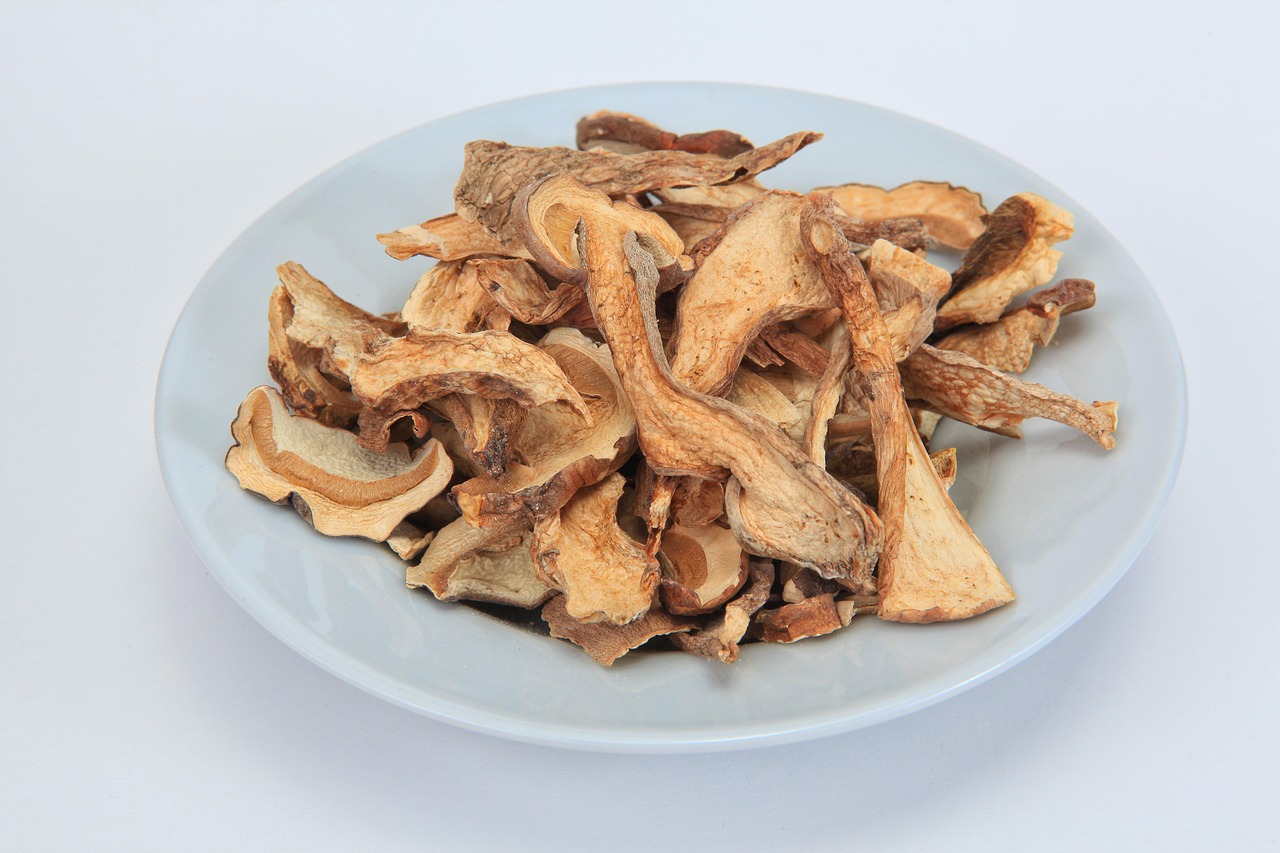How to Store Your Fresh Mushrooms
Fresh mushrooms are simply delicious. However, let’s face it: sadly, mushrooms don’t stay fresh for long. Loved for their versatility and umami flavour in cooking, the battle to preserve mushrooms and keep them fresh and tasty is real. Nobody wants to throw away mushrooms because they were not stored right. This article will reveal the best way to store fresh mushrooms, extend their freshness, and keep mushrooms slime-free.
Make Sure Your Mushrooms Are Dry
Did you know that Mushrooms are made of 80 to 90 percent water? Because of their porous texture, mushrooms act like sponges, soaking up water.
Because of their high water content, mushrooms must be kept dry to stay firm and fresh and maintain their flavour. Therefore, the aim of mushroom storage is to prevent them from releasing water and pulling moisture from the air, thus keeping them dry and fresh for as long as possible.
Clean Your Mushrooms
It is important to clean fresh mushrooms to remove dirt, debris, and potential contaminants. Mushrooms generally grow in soil or compost, so they may have residual particles on their surface. Cleaning also eliminates bacteria or mold that could be present, ensuring the mushrooms are safe to eat. However, because mushrooms are porous and absorb moisture, it’s crucial to clean them properly to prevent sogginess, which can affect texture and flavour during cooking.
To clean mushrooms effectively, do not wash them or soak them. Instead:
- Brush or Wipe: Use a soft brush or a damp paper towel to wipe away dirt gently. Avoid scrubbing too hard, as mushrooms are delicate.
- Rinse Sparingly: If they’re very dirty, you can quickly rinse them under cold water, but don’t soak them as they absorb moisture, affecting the texture and taste.
- Dry Immediately: Pat them dry with a paper towel after rinsing.
How to Store Your Mushrooms in a Refrigerator
Refrigerating mushrooms is essential to maintaining their freshness, texture, and flavour. Due to their high moisture content, mushrooms perish very quickly if left at room temperature. The cool environment of the fridge slows down bacterial growth and prevents mushrooms from becoming slimy or moldy. Proper refrigeration can extend their shelf life to 5-7 days, allowing them to remain fresh longer.
To refrigerate mushrooms properly:
- Use a Paper Bag: Place the mushrooms in a paper bag, which absorbs excess moisture and allows them to breathe. Avoid plastic containers, which trap moisture and cause spoilage. The exception to this is if the mushrooms are already sliced. Then, storing them in an air-tight container in the refrigerator is the preferred method.
- Use Paper Towels: If you don’t have a brown paper bag, wrap the mushrooms in a paper towel and place them in a bowl in the refrigerator. Like the bag, the paper towel will absorb moisture, helping the mushrooms stay fresh.
- Avoid Smelly Foods: Remember, mushrooms act like sponges, so, in addition to absorbing water, they have a habit of absorbing the odours of strong-smelling foods.
- Refrigerate Immediately: Store them in the fridge’s main compartment at a cool temperature (around 1-4°C).
Why You Should Freeze Your Mushrooms and How to Freeze Mushrooms
Freezing mushrooms is an excellent way to preserve them for longer periods. By freezing, you can extend a mushroom’s usability for up to 12 months without significant loss of flavour, texture, or nutritional value—that’s right, one whole year! This is especially helpful if you have a surplus of mushrooms and want to avoid waste. It also means that you can have ‘fresh’ mushrooms at hand whenever you are cooking.
To freeze mushrooms properly:
- Clean the Mushrooms: Brush or wipe off any dirt. Avoid soaking them in water.
- Blanch or Sauté: The next step is briefly cooking the mushrooms, which will help preserve their quality and flavour when frozen. To do this, lightly sauté them in butter until just about cooked or steam them whole for 5 minutes (quartered or sliced mushrooms can be steamed for roughly 3 minutes). Blanch the mushrooms in boiling water for 1-2 minutes or sauté them until they soften to retain texture and flavour.
- Cool and Dry: Drain and let them cool, then pat dry with a paper towel to remove any excess moisture.
- Freeze: Spread them on a baking sheet to pre-freeze individually, then transfer them to airtight containers or freezer bags.
For the best colour post-freezing, you can also dip mushrooms in a solution of 1 pint of water and one teaspoon of lemon juice before cooking. Once the cooked mushrooms cool, place them in a freezer-safe bag and store in the freezer for up to 12 months,
Why You Should Dry Your Mushrooms
Drying your mushrooms is an efficient way to avoid spoilage and make mushrooms more versatile in cooking. Compared to freezing, this method better preserves the quality of the mushrooms whilst extending their shelf-life indefinitely. Dried mushrooms also have an intense umami flavour, and they reconstitute beautifully in a soup, stew, sauce, or stir-fry.
How to Dry Mushrooms
To dry mushrooms, follow these simple steps:
- Clean: Gently brush off any dirt from the mushrooms without using water.
- Slice: Cut the mushrooms into even slices, about 1/4 inch thick, for faster and more consistent drying.
- Air Dry: Lay them out on a drying rack in a well-ventilated area
- Use a Dehydrator: Set the temperature between 120-140°F (50-60°C).
- Oven Drying: Place them on a baking sheet and set the oven to a low temperature (around 150°F).
Once dried, store your dehydrated mushrooms in an airtight container. Glass jars are the recommended storage containers for your dried mushrooms
Why and How to Rehydrate Your Dried Mushrooms
Rehydrating dried mushrooms restores their original texture and makes them usable in various dishes. This process reactivates the mushrooms’ nutrients and flavour, which can be intensified after drying. Rehydration makes them easier to cook, as dried mushrooms become tender and pliable when soaked. The liquid used to rehydrate them absorbs their earthy, rich flavor and can be used in soups, sauces, or stews, enhancing the overall dish. Rehydration is essential for integrating dried mushrooms into recipes that require a fresh mushroom texture.
To rehydrate dried mushrooms:
- Soak in Water: Place the mushrooms in a bowl and cover them with warm water (just enough to submerge them).
- Let Sit: Allow the mushrooms to soak for 20-30 minutes until they become plump and soft.
- Drain and Use: Once rehydrated, drain the mushrooms and pat them dry. You can use them immediately in your recipes.
- Save the Liquid: The soaking liquid is full of rich umami flavour and can be used as a broth in soups or sauces.
How to Know When Your Mushrooms Have Gone Bad
Nothing lasts forever, including the best preserved and stored mushrooms. There are a few tell-tale signs your mushrooms have gone bad and should be discarded.
You can tell if your mushrooms have gone bad by:
- Slimy Texture: Fresh mushrooms should be firm. If they feel slimy or sticky, they are likely spoiled.
- Wrinkled or Shriveled Appearance: Mushrooms that look dried or shriveled are no longer fresh.
- Strong Odour: Fresh mushrooms have a mild, earthy smell. A sour or pungent odour indicates spoilage.
- Dark Spots or Discolouration: Black or dark spots mean the mushrooms are starting to rot. If your mushrooms only have a few dark spots, they’re still safe to eat. However, take it as a sign that they’re in decline and should be used up soon
If any of these signs appear, it’s best to discard them.

